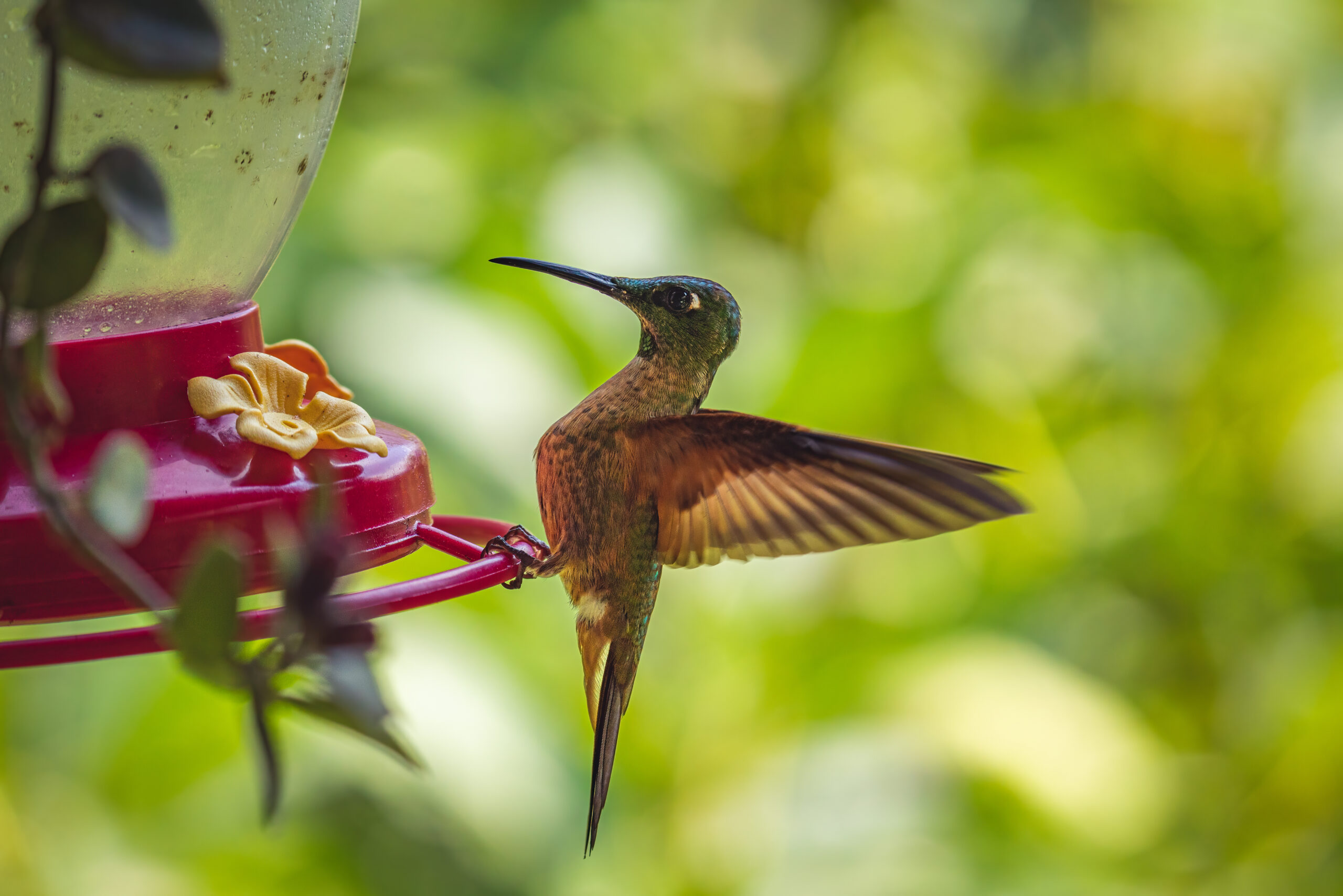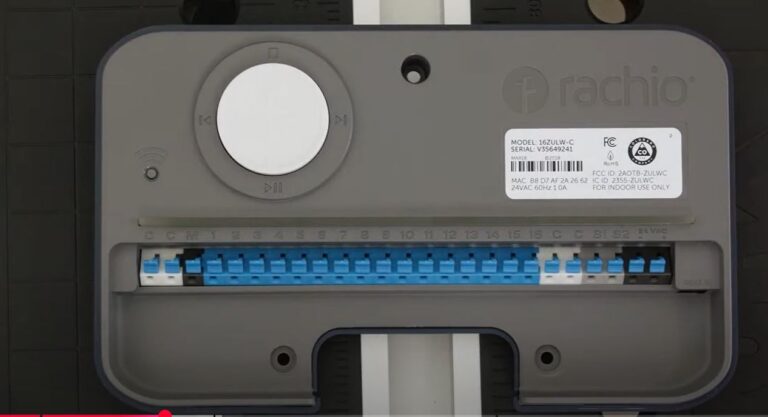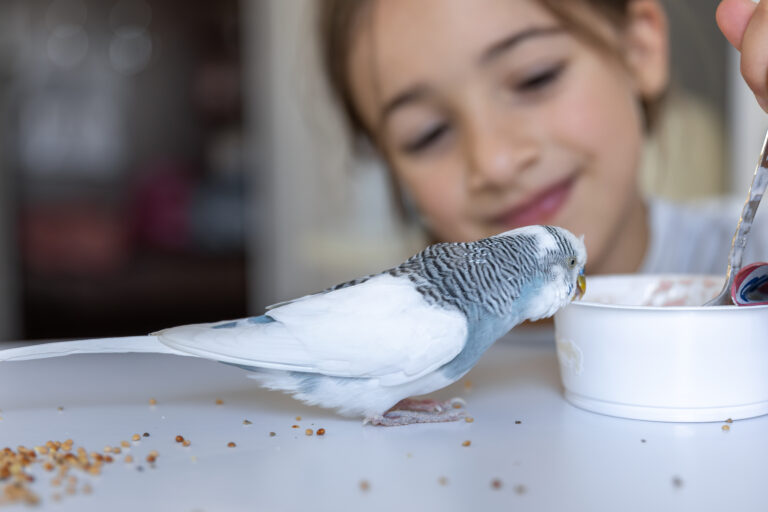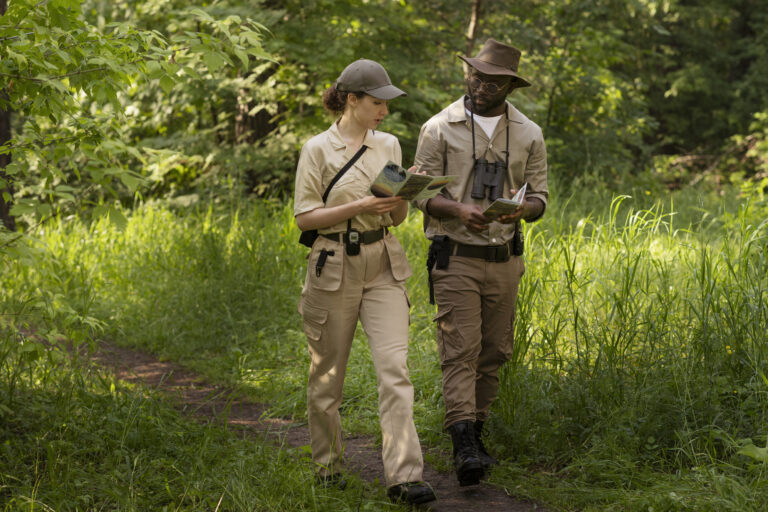5 Best Red Flower Hummingbird Feeder to Attract More Birds in 2025
Last summer, I hung a red flower hummingbird feeder in my Ohio backyard and watched Ruby-throated hummingbirds swarm it within hours.
Their love for vibrant red flower ports inspired this guide to help US birdwatchers choose the best red flower feeders to attract more hummingbirds.
Drawing from my experience and insights from the Audubon Society, I share solutions to maximize bird visits in backyards, RV campsites, and urban balconies, ensuring a delightful birdwatching experience.
Why Red Flower Hummingbird Feeders Attract More Birds
Hummingbirds especially common U.S. species like the Rufous and Anna’s are naturally drawn to the color red. That’s because in the wild, red often signals nectar-rich flowers like salvia, bee balm, and trumpet creeper.
Red flower-shaped ports on feeders mimic these blooms, triggering the birds’ instinct to feed.
Modern feeders typically feature 3 to 8 bright red ports, which not only increase visibility from a distance but also simulate the cluster patterns found in wildflowers.
This visual cue attracts more hummingbirds, particularly during migration seasons.
From sunny California gardens to shaded corners of New York backyards, red-flowered feeders prove consistently effective.
The color and design together tap into the birds’ visual memory and feeding habits, making these feeders a go-to choice for birders across the U.S.
Top Red Flower Hummingbird Feeders for 2025
I tested these feeders in my backyard and on RV trips, evaluating design, durability, and bird attraction.
1. Aspects Hummzinger High View Hummingbird Feeder
This saucer feeder features four red flower ports and a perch for easy viewing. Its leak-proof design and ant moat keep nectar safe, attracting Ruby-throated hummingbirds daily.
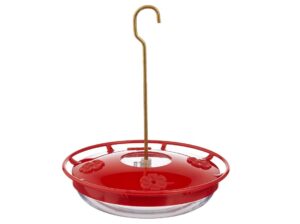
- Capacity: 12 oz, ideal for small to medium bird populations.
- Pros: Easy to clean, BPA-free polycarbonate, lifetime guarantee.
- Cons: Limited ports for busy yards.
- Price: ~$26 (Audubon Shop).
- Best For: Backyard birdwatchers seeking reliable, low-maintenance feeders.
2. More Birds Ruby Glass Hummingbird Feeder
This budget-friendly glass bottle feeder has four red flower ports with bee guards. Its 10 oz capacity suits small gardens, drawing hummingbirds with vibrant colors.
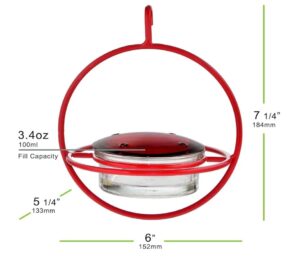
- Capacity: 10 oz, perfect for 2-4 birds.
- Pros: Shatter-resistant glass, affordable (~$12, Amazon).
- Cons: Occasional leaks in high winds.
- Best For: Budget-conscious US homeowners.
3. Perky-Pet Red Square Antique Glass Feeder
With an embossed glass design and four red flower ports, this feeder blends vintage charm with functionality. It attracted Rufous hummingbirds during my RV camping in Oregon.

- Capacity: 24 oz, great for larger bird groups.
- Pros: Decorative appeal, easy-clean base.
- Cons: No bee guards, heavier (1.4 lbs).
- Price: ~$20 (Chewy).
- Best For: Gardeners wanting aesthetic feeders.
4. Kingsyard Glass Hummingbird Feeder
This 26 oz glass feeder with six red flower ports drew flocks in my urban balcony tests. Its sturdy build and bee guards ensure clean nectar.
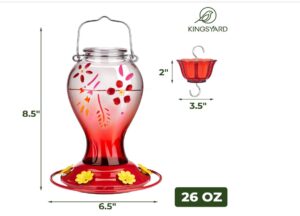
- Capacity: 26 oz, suits busy urban settings.
- Pros: High capacity, durable glass, bee guards.
- Cons: Slightly bulky for small balconies.
- Price: ~$18 (Amazon).
- Best For: City dwellers in apartments.
5. First Nature Hummingbird Feeder
Featuring ten red flower ports, this plastic feeder is lightweight for RV travel. It attracted hummingbirds consistently during my Texas camping trips.
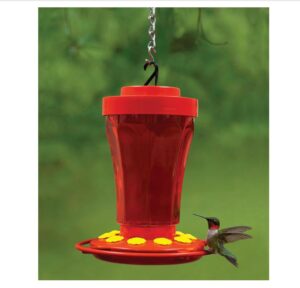
- Capacity: 16 oz, versatile for travel.
- Pros: Affordable (~$5, Amazon), multiple ports.
- Cons: Plastic may fade in sun.
- Best For: RV campers and budget travelers.
Benefits of Red Flower Hummingbird Feeders
Why do red flower hummingbird feeders attract more birds?
Red flower ports on hummingbird feeders are intentionally designed to imitate the natural blooms that hummingbirds love especially red flowers like bee balm, columbine, and trumpet vine.
Hummingbirds have excellent vision and are particularly drawn to bright colors, with red being their top favorite.
By mimicking these flowers, the feeders become highly visible and appealing, helping birds recognize them as reliable nectar sources.
How do red flower feeders support garden pollination?
When hummingbirds visit feeders frequently, they also explore the surrounding garden.
This encourages them to interact with nearby flowering plants. As they move from flower to flower, they carry pollen on their beaks and feathers, promoting natural pollination.
This is particularly beneficial in American backyards, where pollinator-friendly gardens are becoming a trend to support local ecosystems.
What aesthetic value do red flower feeders add?
Beyond function, these feeders are a visual win. Red flower ports add a pop of color, blending naturally with other blooms in your garden.
Whether hung near windows, patios, or between flower beds, they enhance the overall look of your outdoor space while also inviting vibrant, fluttering activity that makes your garden come alive.
Key Considerations for Choosing Red Flower Feeders
Choose feeders based on material, capacity, design, and maintenance for optimal bird attraction.
Material Quality
Durable glass (e.g., Perky-Pet) resists UV fading, lasting 3-5 years. BPA-free plastic (e.g., First Nature) is lightweight but may degrade in 1-2 years.
Capacity and Size
Select 8-16 oz feeders for small yards or balconies, 24-32 oz for larger gardens. Larger capacities reduce refills but risk nectar spoilage.
Design and Attractiveness
Vibrant red flower ports (3-10) attract more hummingbirds. Saucer designs (e.g., Aspects) prevent leaks; bottle designs (e.g., More Birds) add style.
Ease of Cleaning
Choose wide-mouth feeders for easy cleaning with vinegar. Detachable ports (e.g., Kingsyard) prevent mold, ensuring bird safety.
Maintenance Tips for Red Flower Feeders
Clean feeders every 2-3 days with hot water and vinegar to prevent mold. Store nectar in portable coolers (40°F) for RV trips to avoid spoilage.
Attracting More Hummingbirds
Plant red flowers like salvia and trumpet vine near feeders to boost attraction. Add misting fountains or birdbaths for hydration, enhancing your US garden’s appeal.
Personal Experience: My Hummingbird Haven
Last July, I hung an Aspects Hummzinger near salvia in my Ohio backyard. Within days, Ruby-throated hummingbirds visited hourly, drawn to the red flower ports.
Cost Analysis
Plastic feeders ($5-$12) are budget-friendly but need replacing every 1-2 years. Glass feeders ($15-$30) last longer, saving ~$10-$20 over 5 years.
Expert Insights
Holly Grant from Cornell Lab of Ornithology says, “Red flower ports mimic natural blooms, attracting hummingbirds effectively. Clean regularly to ensure safety.”
Charles van Rees, a naturalist, adds, “Saucer-style red feeders minimize leaks for travel, while glass adds durability for backyards.”
Practical Applications
- Backyards: Hang Perky-Pet feeders on sturdy hooks near bee balm, 5-6 feet high, to attract Anna’s hummingbirds.
- RV Camping: Use First Nature feeders with suction cups on RV windows, stored in compact bags.
- Urban Balconies: Install Kingsyard feeders with UV decals to prevent collisions, paired with potted salvia.
FAQs
Do red flower feeders attract more hummingbirds?
Yes, red flower ports mimic nectar-rich blooms, drawing species like Rufous. Use no-dye nectar for safety.
How do I hang a red flower feeder?
Place 5-10 feet high, near shade or flowers, using sturdy hooks or suction cups for balconies.
How often should I clean my feeder?
Clean every 2-3 days with vinegar or 1:9 bleach solution, especially in hot US climates.
Are glass or plastic red flower feeders better?
Glass (e.g., Kingsyard) lasts longer; plastic (e.g., First Nature) is lighter for travel.
How do I prevent bees and ants?
Use bee guards (e.g., More Birds) and ant moats (e.g., Aspects). Avoid yellow ports.
Conclusion
Red flower hummingbird feeders, like Aspects Hummzinger or Kingsyard, attract more birds with vibrant ports mimicking salvia blooms.
Choose glass for backyards, plastic for RV trips, and ensure regular cleaning for bird safety across the US. Share your feeder tips below and join our birdwatching community!

